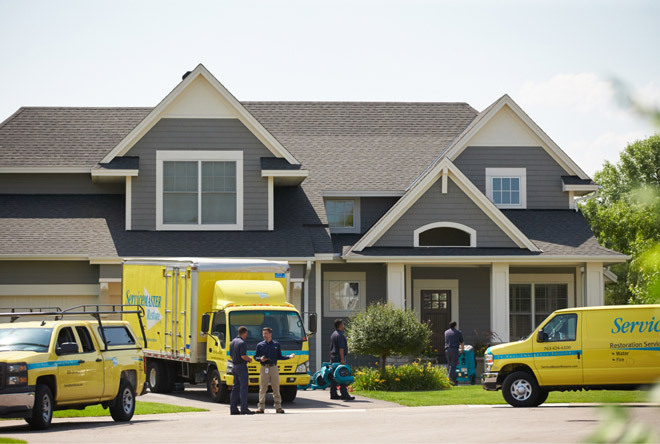MOLD REMOVAL AND MOLD REMEDIATION IN ST. PAUL AND MINNEAPOLIS, MN
What Is Mold In House?
Mold is a microscopic life form that is found in all parts of the world. It is part of the natural decay process of all organic materials. There are many different species of mold.
Although mold is diverse, common characteristics can be found:
- Mold requires a natural food source like cellulose, which is found in drywall, wood & other home materials.
- Mold must have oxygen.
- Mold also requires moisture. To avoid mold, buildings must stay dry on the inside.
- Mold spreads by microscopic seeds called “spores.”
Give us a call at (612) 712-7464 or contact us online for mold removal in St. Paul today!
Why is it a Problem?
- The colored, fuzzy growth on the surface of a wall, floor, ceiling or other indoor surface is a problem.
- Active mold colonies usually emit a distinct, “musty” odor.
- Mold’s main function is to decay, digest, and recycle dead organic matter, which means it will damage the surfaces it grows on.
- Exposure to mold can cause mild to severe allergic reactions.
What is a Reasonable and Safe Response?
If the drying of wet building materials is commenced within 24 hours, the chances of preventing mold growth can be lowered. If building materials remain wet and untreated, it is predictable that mold will grow. Therefore, addressing and eliminating moisture problems is the critical first step.
Once mold is present, drying is not enough. Mold must be either removed or decontaminated. This process is called mold remediation, which means “to remedy” or “to cure.” The extent of the mold problem and the resulting damage will determine the appropriate course(s) of action to pursue.
The U.S. Environmental Protection Agency (EPA) has published a helpful guidebook for homeowners about the cleanup and prevention of mold problems in homes. This booklet can be found at www.epa.gov/iaq/molds/moldguide.html.
Northwest ServiceMaster Provides Mold Removal, Mold Remediation, And Black Mold Specialists In The Twin Cities Area
With the increasing attention in the mass media, mold contamination—especially black mold—has become an over-whelming problem for homeowners, property managers, insurance providers, and restoration companies in need of mold removal.
The mold remediation process becomes urgent because, in a moist, indoor environment, mold growth can begin in just 48 hours. The moisture can be a result of a flood, a slow leak, a broken pipe, or just high humidity. The growing concerns of allergies and poor air quality are identified with mold contamination.
Despite the rapidly growing body of knowledge about mold, it remains the subject of a lot of confusion. The following is a brief explanation of mold and the complications mold can create within a home, office, or indoor setting.
Dial (612) 712-7464 or contact us online to schedule your mold inspection today!
frequently asked questions
PROVIDING YOU WITH ALL THE INFORMATION YOU’RE LOOKING FOR-
What does black mold look like?
Black mold, also known as Stachybotrys chartarum, is a type of mold that can appear dark greenish-black or black in color. However, it's important to note that not all molds that appear black are necessarily Stachybotrys chartarum. Here are some characteristics commonly associated with black mold:- Color: As the name suggests, black mold typically has a dark greenish-black or black appearance. However, it may also have a slimy texture, making it appear shiny or wet.- Texture: Black mold often has a slimy or wet texture when it is actively growing. It can appear as a patch or a fuzzy layer on surfaces.- Shape: It can grow in various shapes, including clusters of small spots or larger colonies that spread over time. The texture can be velvety or powdery.- Location: Black mold is commonly found in areas with excessive moisture, such as damp basements, bathrooms, kitchens, or areas affected by water damage. It can grow on a variety of surfaces, including drywall, wood, carpet, and other organic materials.- Odor: Black mold is often associated with a musty or earthy odor. However, it's important to note that not all molds have a distinct smell, and relying on odor alone is not a reliable method to identify black mold.


